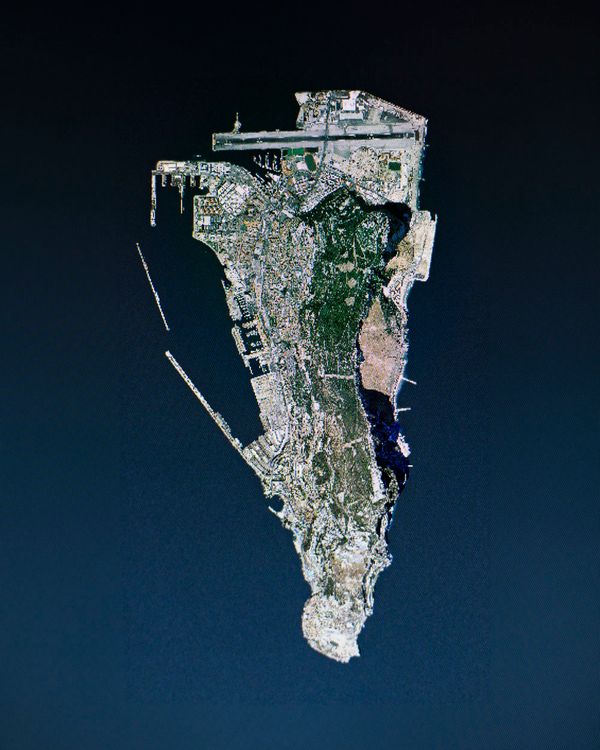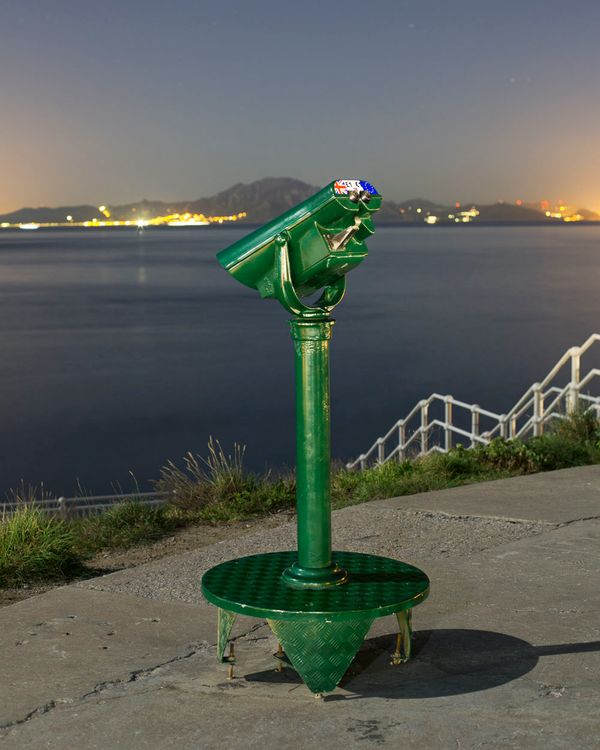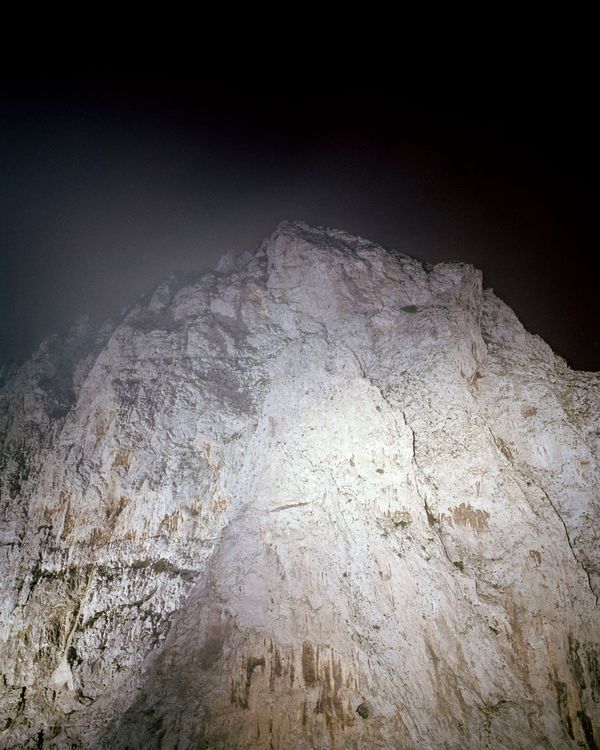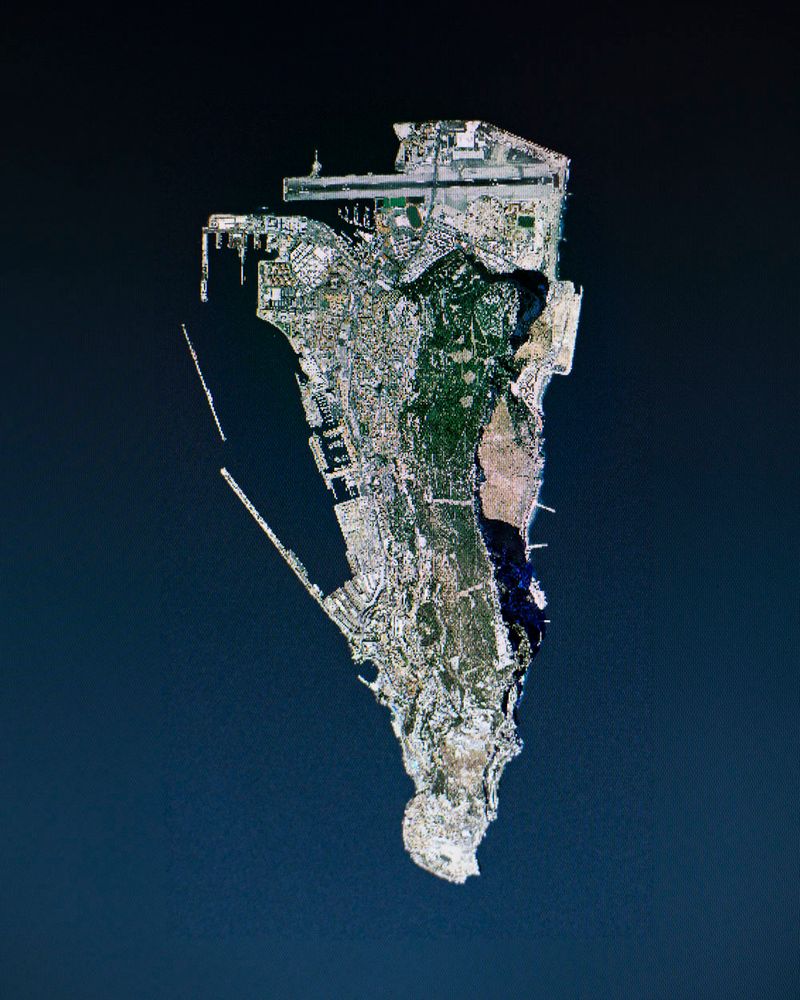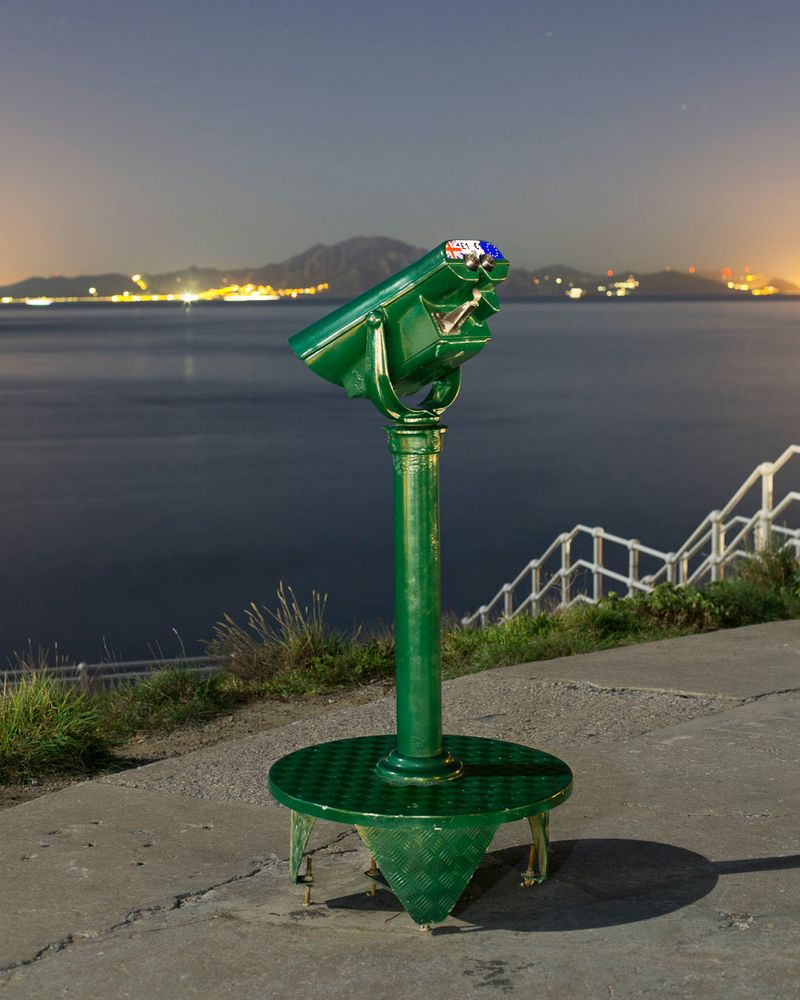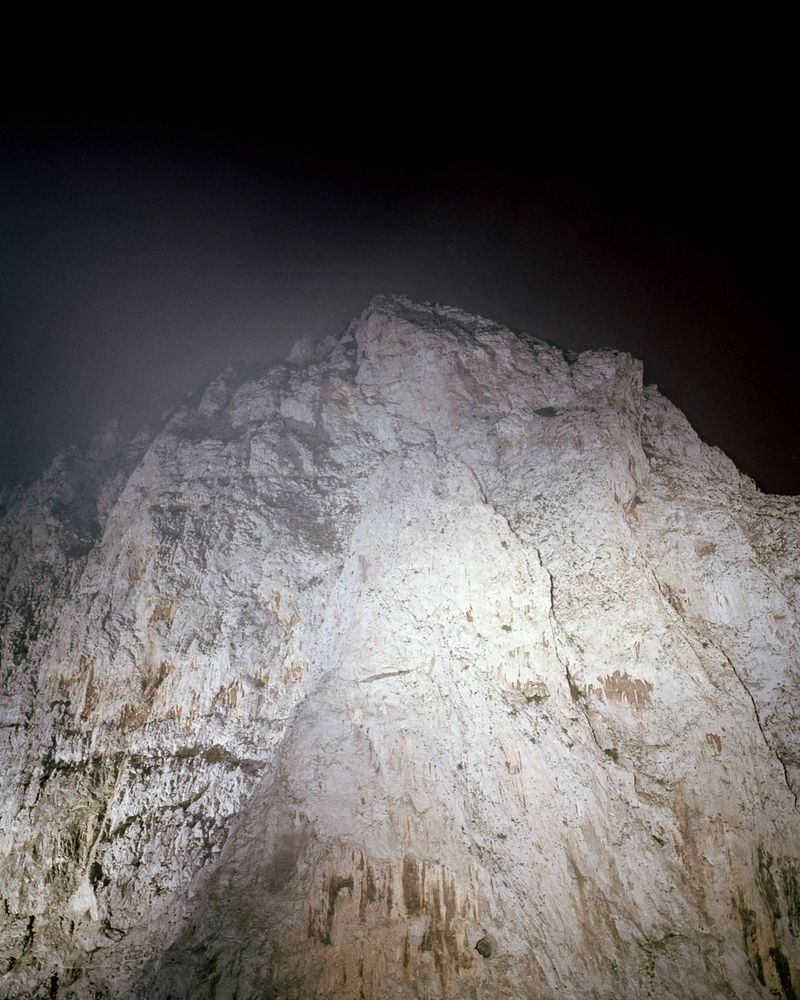Revealing Gibraltar's Water Challenges
-
Published11 Apr 2018
-
Author
Luke Withers explores Gibraltar’s difficult relationship to its natural resources, finding paradoxically, how the constant struggle defines the make-up of its culture today.
Luke Withers explores Gibraltar’s difficult relationship to its natural resources, finding paradoxically, how the constant struggle defines the make-up of its culture today.
Gibraltar is a British Overseas Territory, located on Spain's southern coast, which rises from the Mediterranean at the gates of the Atlantic. The landscape is dominated by the Rock of Gibraltar – a 426m limestone rock. Due to its geography, the region lacks natural resources, relying on desalination for its drinking water; a process where saltwater is drawn from the seas, and then is separated through a membrane into freshwater and brine.
Territorial Volumes is a documentation of all the subterranean infrastructure that demarcates the disputed territory essentially into rock and water, two elements which support the life of the population, and yet, create an unexpectedly knotted representation of the terrains own geopolitical depiction.
In your series, Territorial Volumes, you look at Gibraltar's relationship to history, as well as to nature, and your photographs vary from classic documentary to more abstract readings. Why do you think it is important to approach the story in this ambiguous tone?
The ambiguity of the series is an interesting phenomenon to me, because I believe that I photograph in a reasonably direct way. I do very little wandering about looking for images; the searching really happens within the confines of a place, item or individual that I have identified as significant from my research.
So I think it’s really in the connections between images that the ambiguity arises; each image has the potential to throw another into confusion and that’s perhaps a product of the wider connections that I attempt to make in the work. This is where the link between history and nature comes in; in a place like Gibraltar the two are inextricably linked. The Rocks’ unique topography and location has made it a key strategic location through history, but conversely its lack of elemental resources, particularly water, is what makes it so difficult to populate. The history of the place is defined by a struggle both for and against its natural characteristics. So my approach was to explore the relationship of the territory to its natural resources, or lack thereof, and how that struggle manifests itself technologically, politically, and culturally today.
Throughout the work you appear to be concerned with people and technology, yet, a certain sense of ‘Britishness’ is also present without being overly obvious to its geopolitical location. Was this a conscious act?
I was really trying to avoid any imagery that explicitly depicted the kind of ‘Britishness’ which is very much on display in Gibraltar. That kind of sovereign display felt surface, performative and pretty trivial given that Gibraltar has a huge Spanish and international population. The Union Jack appears just once in the images, as a small sticker alongside the European Union Flag on a tower viewer. So the absence of that ‘Britishness’ is partly an aversion to trivialising the imagery, and perhaps partly the influence of growing up in Northern Ireland, where the connection between sovereign display and photography is generally unhelpful and simplistic, particularly where identity and territory are concerned, and even more so when a place has some kind of contested nature.
I am however direct in placing the series in Gibraltar, hence the satellite image of the territory surrounded by sea. For me, that image not only places the rest of the imagery within the confines of the territory, but also encapsulates some of the themes by depicting Gibraltar as entirely detached from the Spanish landmass to the north, where the two European states share a land border. It represents the territory as an island state and for me that says something of the mentality of those undertaking the mapping and the significance of land and water in that place.
Research is clearly relevant in the development of your personal projects. How do you seek out your stories and how do you know when you have gathered enough information?
Research is very much at the heart of what I do; I graduated from the Documentary Photography Course at the University of South Wales in July 2017, so over the past three years, most of my work has been developed within a setting where research really had to underpin and inform my understanding and approach to a subject.
The stories generally come from my interest in a particular subject matter, which I then seek to pair with a wider issue, this often manifests itself within some kind of technological subject. The Territorial Volumes project for example came about from a combination of research I had been doing on the desalination process, particularly in relation to Israel, and an interest in Gibraltar, after the vote to leave the European Union. I really enjoy trying to explore abstract ideas or concepts, and linking together multiple apparently disparate subjects. It’s amazing the connections you find and the ability that photography has to link them together through visuals alone.
Would you say that a lot of the research and understanding for a story comes from the actual execution on the field? How do you find a balance between gathering information on location and reading up on project ideas?
It’s hard to say, because almost every image in the series is a product of something I have identified in my research beforehand. However, most images also have an additional element that I could not have identified or anticipated from research alone. I suppose the real advantage of gathering information on location is when interacting with people; there is simply no substitute for talking to people in person and allowing them to see that your interest in what they are doing is genuine, despite how trivial or mundane they may think it to be. For me this is really important, because the relationships are born out of research, I’m seeking people out because of their involvement in something and that can make them a little cautious. Once you spend time with them and match their enthusiasm for whatever it is they are doing, then a wealth of opportunities and points of interest become available. I’m always blown away by the kindness of people who welcome me into their worlds for a bit, and offer their time, effort and knowledge.
--------------
Luke Withers is a Northern Irish documentary photographer currently based in Belfast, United Kingdom. His photographic practice is concerned with the social, cultural and political relationship between technology and society. Follow him on PHmuseum, Twitter, and Instagram.
Verónica Sanchis Bencomo is a Venezuelan photographer and curator based in Hong Kong. In 2014, she founded Foto Féminas, a platform that promotes the works of female Latin American and Caribbean photographers. Follow her on Twitter and Instagram.
